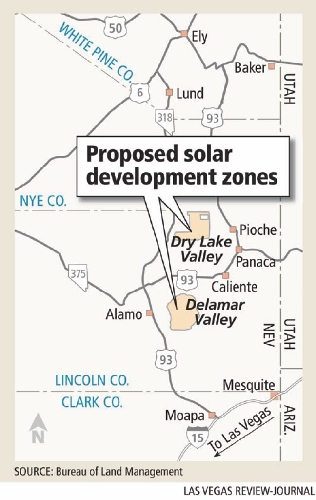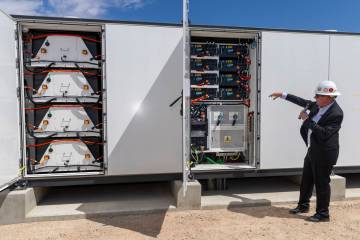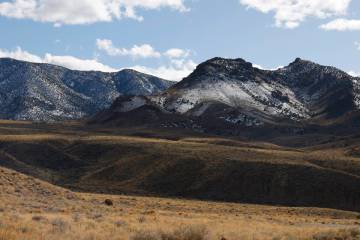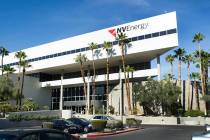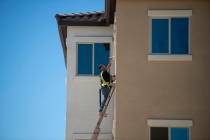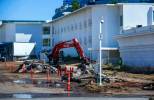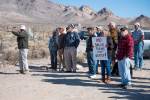Lawmakers seek Lincoln County “solar development zones”
WASHINGTON -- Two Nevada lawmakers are seeking to designate parts of two valleys in Lincoln County as "solar energy development zones" where leases for commercial projects would be fast-tracked and initial royalty payments could be reduced or forgiven.
Sections of Delamar Valley and Dry Lake Valley are named as test areas in bills introduced late Thursday.
The legislation would set up a framework for the Bureau of Land Management to lease federal land for sun power projects, collect fees and royalties from developers and share them with state and local entities, and for wildlife protection.
If the bill is successful, sponsors said the framework could serve as a model elsewhere in the West, where the Interior Department is performing environmental studies on two dozen tracts with high potential for solar exploration.
Companion bills were introduced by Sen. Harry Reid, D-Nev., and Rep. Dean Heller, R-Nev.
Aides said they were the product of months of negotiations involving county officials and land users.
"This legislation will create jobs, support rural communities, bolster wildlife, and help increase our nation's energy independence," said Reid, whose focus for the past few years has been the promotion of Nevada as a bonanza for solar, wind and geothermal energy.
The bill would give BLM clear authority to lease land for solar, as it does now for geothermal and oil and natural gas exploration. It would direct that the first lease sales in the Lincoln County valleys take place no later than 60 days after passage, and that lease sales be given "highest priority consideration."
As an incentive to developers, royalty payments could be reduced or forgiven outright for the first five years that electricity is generated on leased land.
The Delamar Valley zone would consist of 2,845 acres. The zone at Dry Lake Valley covers 10,945 acres. In both valleys, the land that would be set aside is a fraction of what the Department of Interior had proposed be studied as potential high value lands for solar development.
Uneasy that such broad swaths were being considered, county officials initiated a local process that came up with consensus maps, according to Capitol Hill aides.
"This bill was crafted with Lincoln County, sportsmen, ranchers, conservationists and others who care about getting solar development right," Reid said.
Heller said the bills "will be a model for responsible energy development, create jobs, and help Nevada realize its renewable energy potential."
As for revenue sharing, 25 percent of fees and royalties would go to the state and 25 percent to the county. For the first 10 years, 15 percent would be steered to the BLM to expedite renewable energy permitting, and 35 percent would go to wildlife mitigation. After 10 years, the wildlife fund would receive 50 percent. There were no immediate estimates of how much revenue might be generated.
Other areas being studied by the Interior Department as potential solar development zones include Amargosa Valley in Nye County, Millers and Gold Point in Esmeralda County, East Mormon Mountain in Lincoln County and Dry Lake in Clark County near the Moapa River Indian Reservation.
Contact Stephens Washington Bureau Chief Steve Tetreault at stetreault@stephensmedia.com or 202-783-1760.
American Solar Energy Pilot Leasing Act of 2010
MAP: Delamar Valley Solar Development Zone
MAP: Dry Lake Valley Solar Development Zone



